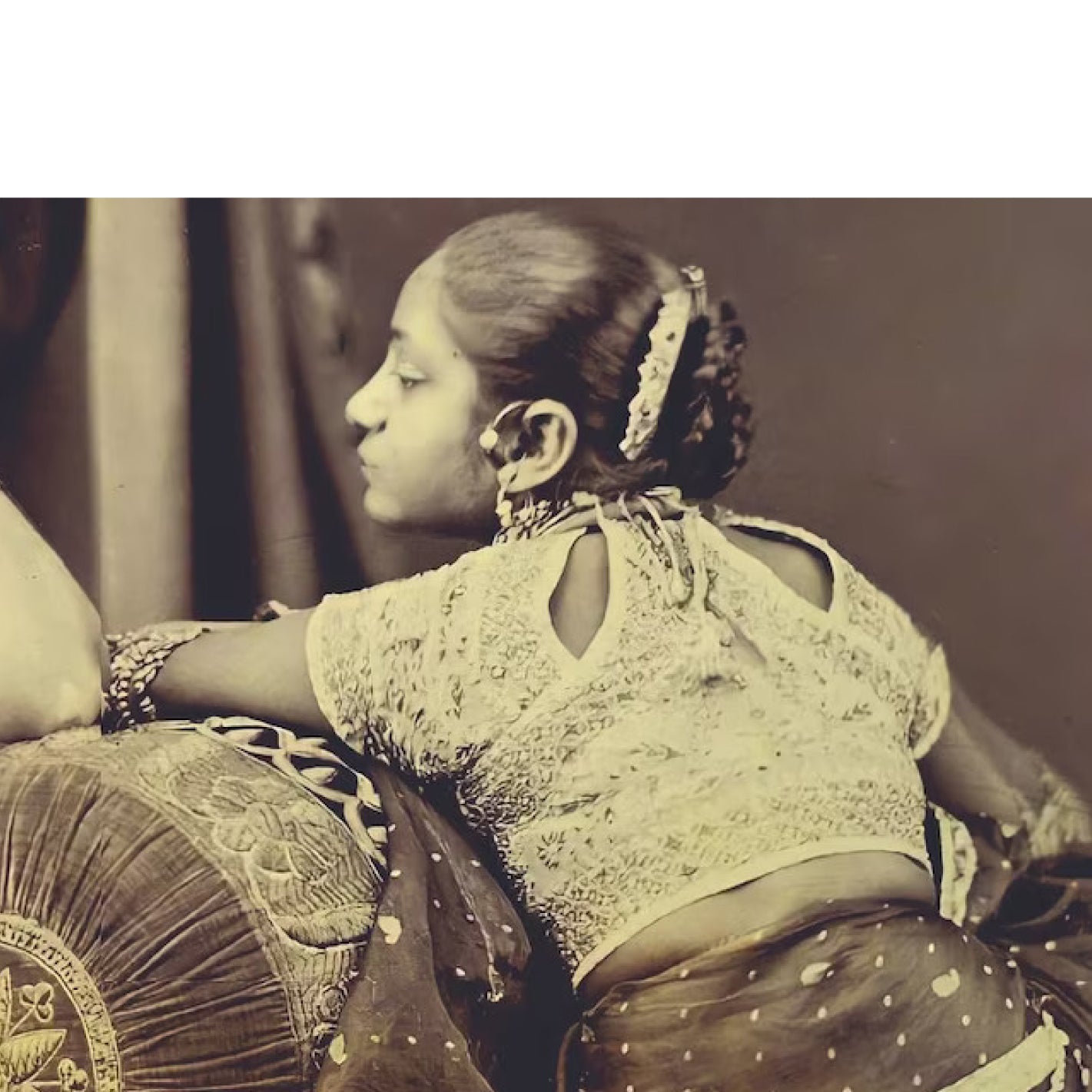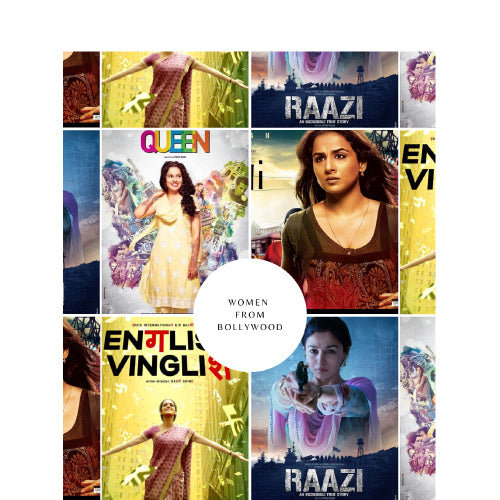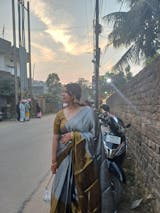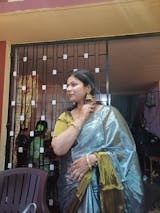
Evolution of the Blouse: From Victorian Times to Modern-Day
The saree is an integral part of Indian history and can be traced back to the Indus Valley Civilization. But have you wondered how women started wearing a blouse? The blouse, a seemingly simple garment, has quite an interesting and rich history that tells a tale of societal norms and changing times. The history of blouses helps us understand the ever-evolving concept of femininity. In this blog, let us take a closer look at the evolution of blouses and how today they have become a staple in every Indian woman’s wardrobe.

Image Source: https://in.pinterest.com/
The History of Blouses
Indian temples and sculptures are a constant reminder of our rich cultural history. Have you noticed how women in ancient Indian sculptures always have bare bosoms? Women can be seen wearing nothing more than an unstitched length of cloth over their lower body and a loosely draped piece of fabric or lavish jewelry covering their breasts in sculptures from the Mauryan and Sunga periods (about 300 BC).
It is believed that the idea of stitched clothing came in much later.

Image Source: https://www.pure-elegance.com/
The Evolution of Blouse
The earliest known ancestors of the modern saree and blouse find its mention in Sanskrit and Pali texts dating back to the sixth century B.C. This three-piece ensemble was known as Poshak, were attires consisting of the Antriya, the lower garment, the Uttariya, a veil worn over the shoulder or head, and the Stanapatta, a chest band.

Image Source: A Nuove Image:Facebbok
Influence of Foreign Invaders on the Evolution of Blouse
It is interesting to note how influences from various visitors and invading cultures also determined how a Stanapatta was used. Sculptures from the Gupta Empire (3rd–6th century CE) depict some women in clothing that looks like stitched blouses or Cholis. This shift towards a more tailored garment could be linked to interactions with cultures accustomed to stitched upper garments.

Image Source: Kevin Standage
The Medieval Fashion Story
With the advent of the Mughals in India, women were introduced to the purdah culture. In the realm of fashion, paintings from this era depicted women in Salwar-Kameez and veils. However, Kangra and Rajput-style paintings depict women wearing stitched blouses or cholis with wide skirts or ghaghara during this period.
European cultural influences slowly crept in with the ingress of the Portuguese in the Southern and Western parts of India.
From Covering to Complementing: The Colonial Influence
With the arrival of the British Raj in the 18th century, sarees and blouses saw significant upgrades. In erstwhile India, sarees were traditionally draped to reduce the need for a blouse. However, modesty is a significant part of British culture.
Nobel Laureate Rabindranath Tagore's sister-in-law, Jnanadanandini Devi, is frequently credited with popularizing a more blouse-centric style of saree draping in the early 20th century.
In Bengal saree was traditionally draped without a blouse, however, Jnanadanandini Devi was denied entry at a British Club in Calcutta on the ground of improper attire.
This brought in a demand for more modest attire with the saree. To create a more covered look, pleats were tucked in the middle and the longer loose end (pallu) was drawn across the breasts.
Victorian-style frills, ribbons, brooches, and high collars became popular embellishments for blouses.
Thanks to her, the ‘blouse’ and ‘petticoat’ entered the Indian vocabulary and are now an integral part of our traditional saree style.

Image Source: wikipedia.org
Self-Expression in The Evolution of Blouse
The pre-independence era saw considerable rebellions against colonial-imposed limitations. Renowned Indian-Hungarian painter Amrita Sher-Gil defied conventional expectations by choosing daring looks like with sleeveless blouses sarees.
In the meantime, by the 1940s, an innovative wave of blouse designs was introduced with the rise of Indian cinema and the ensuing expansion of the homegrown fashion industry. Although materials like silk and cotton continued to be in style, satin blouses with statement sleeves—a style advocated by Maharani Gayatri Devi—also became fashionable.
Post-Independence India and Tale of Saree & Blouse
India underwent a dramatic shift with its independence in August 1947. During this nation-building period, the blouse and saree together evolved into a potent national identity symbol.
Weavers, designers, and women welcomed the celebration of Indian ancestry. Some regional styles became more well-known, such as the Soth Indian "Kanjeevaram" blouse (made of rich silk brocade) and the Maharashtrian "Kucheu" blouse (with its deep back neck and short sleeves).
Globally, during the 1960s and 1970s, there was a shift towards comfort and practicality, which was mirrored in blouse designs that were bolder and simpler, often with shorter sleeves.

Image Source: www.scribd.com
Modern-Day Blouse: A Canvas for Individuality
We have to thank Bollywood heroines like Nargis, Mumtaz, Vaijantimala, Rekha, and many more for bringing about a change in fashion.
From the sleeveless blouses of Rekha to the iconic backless blouse of Madhuri in Hum Aapke Hai Koun, who can forget the contribution of these ladies in making modern designer blouses a canvas for individuality?
Today designers are pushing boundaries and embracing global trends. When Alia Bhat walks the red carpet of the Met Gala effortlessly in a sheer saree and contemporary blouse, we know how powerful Indian fashion is!
The current repertoire includes backless designs, halter necks, peplums, and crop tops. Global style icons Deepika Padukone and Priyanka Chopra are often seen presenting the saree-blouse combo in a modern way at their various global events.
Social media has helped to further democratize fashion by enabling women to express themselves through their blouse choices and to try new things. From micro-blouses to bralettes turned into blouses, we are witnessing the simple piece of garment catching on trends and becoming more iconic than ever!
Ultimately, the saree blouse's tale serves as evidence of its versatility. It has reflected the shifting social landscape and the changing perception of the Indian woman, which has ranged from modest to brave, conventional to progressive. The blouse will surely change with women as they break down barriers and reinvent themselves, continuing to be a vital component of the saree's timeless allure.






